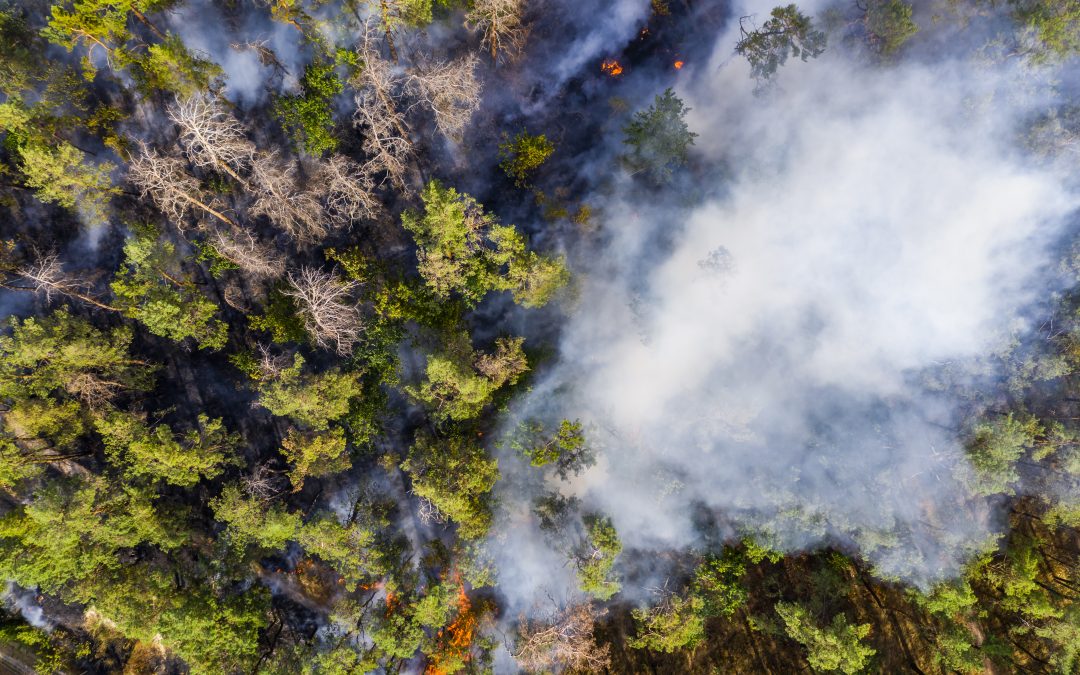In recent years, the U.S. has seen a dramatic increase in the frequency and intensity of wildfires. In the worsening wildfire season, primarily in the western states like California, Oregon, and Washington, have extended their season, now lasting nearly twice as long as in the past. The impact is profound: vast areas of land are scorched, communities are displaced, and the air quality deteriorates significantly, posing severe health risks to millions of people.
The link between climate change and the intensifying wildfire season is clear. Rising global temperatures lead to drier conditions, turning forests into tinderboxes ready to ignite. Human activities, like the careless handling of campfires or the inappropriate use of pyrotechnics during celebrations, often spark these devastating blazes. Once ignited, the dry, hot conditions fueled by climate change allow these fires to spread rapidly and grow uncontrollably.
The health implications of wildfires extend beyond the immediate danger of the flames. Wildfires contribute to significant air pollution, releasing a mixture of gases and fine particles that can penetrate deep into the lungs. This pollution aggravates respiratory and cardiovascular conditions, leading to increased hospital admissions and even premature deaths. In some cases, the smoke from these wildfires travels thousands of miles, affecting air quality in regions far from the actual fires.
The economic impact of wildfires is another significant concern. In 2023 alone, wildfires caused over $18 billion in damages across the United States. The costs associated with firefighting, rebuilding, and healthcare strain local economies, especially in areas that are already financially vulnerable. Moreover, the destruction of natural resources, such as forests and farmland, can have long-term economic repercussions, including lost income from agriculture, tourism, and other industries dependent on the natural environment.
One of the most effective ways to combat the factors contributing to these severe wildfire seasons is by addressing the root cause: climate change. This is where renewable energy, particularly solar power, plays a crucial role. By transitioning to clean energy sources like solar, we can reduce the greenhouse gas emissions that drive climate change.
Solar energy offers a dual benefit. First, it reduces our reliance on fossil fuels, which are the primary source of carbon dioxide emissions. By harnessing the sun’s energy, we can power homes, businesses, and even vehicles without emitting harmful pollutants into the atmosphere. This reduction in greenhouse gases directly helps mitigate the warming trends that exacerbate droughts and, by extension, wildfires.
Second, solar energy contributes to improved air quality. Unlike coal or natural gas power plants, which release pollutants that can lead to smog and respiratory issues, solar panels generate electricity without emitting any pollutants. As more regions adopt solar energy, the cumulative effect is a significant decrease in the pollution levels that contribute to both climate change and public health crises.
The transition to renewable energy is not just a necessity for reducing the frequency and intensity of wildfires; it is a vital step toward protecting public health and ensuring a livable planet for future generations. By investing in solar power and other renewable technologies, we can begin to reverse the damage caused by decades of fossil fuel dependence and create a more resilient and sustainable world.
In conclusion, as we confront the challenges of an extended wildfire season and the associated air pollution, the adoption of solar energy emerges as a key solution. It is not only a means of reducing greenhouse gas emissions but also a powerful tool in the fight against the public health impacts of climate change. The sooner we embrace this transition, the better equipped we will be to protect our environment and our communities from the growing threat of wildfires.
Solar energy is more than just a technological innovation; it represents a paradigm shift in how we approach our relationship with the environment. By reducing our carbon footprint through solar power, we are actively taking steps to slow down the adverse effects of climate change, including the prolonged wildfire seasons. This proactive approach not only safeguards our air quality and public health but also ensures that future generations inherit a planet capable of sustaining life without the constant threat of climate-induced disasters. The path to a cleaner, safer world begins with the widespread adoption of renewable energy, and solar power stands at the forefront of this critical movement.


Recent Comments